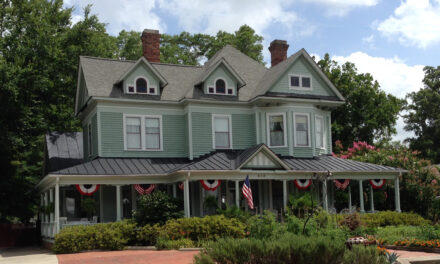The highlight of a student’s undergraduate music career is a performance with the symphony orchestra. A festive occasion, the Scholarship Benefit Concert features talented, hard-working young musicians. This year’s winners of the Annual UNC Concerto Competition were horn players Matthew Martell, Laura Hartley, Daniel Hammond, and Samantha Englander, all students of Andrew McAfee, and sopranos Lindsey Dvorak and Sara Abernathy, students of Barbara Ann Peters and Jeanne Fischer, and Catherine Park, a student of Terry Rhodes. Conducted by Tonu Kalam, the University of North Carolina Symphony Orchestra performed two weighty pieces showing off the high performing level of the flagship group: Wagner’s Prelude to Die Meistersinger von Nürnberg and Borodin’s Polovtsian Dances from Prince Igor.
Robert Schumann’s Konzertstuck in F for Four Horns and Orchestra, Op. 86 (1849), was an immediate success and remains a landmark work from the composer’s most productive year. Perhaps reflecting the tumultuous historical moment and exploiting the capability of the newly developed valve horn, the music is grand yet optimistic and lush with vibrant color. Created in four independent voices, each uniquely challenging, Schumann’s piece is rooted in the traditional concerto grosso. With a number of shining moments, the horn ensemble, led by Martell, who performed the fiendishly difficult tessitura of the first part, played very well in tune and with great verve; the orchestra enhanced the performance with equal commitment. The horn players, who played major sections in Die Meistersinger, were welcomed to their orchestral seats with well-deserved enthusiasm.
Lindsey Dvorak’s elegant performance of three songs from Joaquin Turina’s Canto a Sevilla, Op. 37, provided a marked contrast to the horn concerto. The son of an Italian painter, and influenced by Falla and Debussy, the composer avoids a decisively nationalistic tendency. The orchestral color of the opening piece, Las Fuentecitas del Parque, for example, provides a delicate, shimmering backdrop to the soprano’s lyric melody. Unfortunately, by sheer numbers, the orchestra overpowered her voice in the lower register, particularly in “La Giralda.” Gaetano Donizetti’s “O luce di quest’ anima,” from Linda di Chamounx, calling for a coloratura soprano, was deftly performed by Catherine Park. With a powerful instrument in the making, she soared. And though her reading of Bellini’s “Oh! Quante volte,” from I Capuletti e i Montecchi, was beautiful, the weight of the orchestra pushed her, and it lacked the delicacy one expects. Even the harp seemed forced. Finally, Sara Abernethy tackled two arias from André Previn’s A Streetcar Named Desire (1998). Abernathy was strong, convincing, and projected the stormy yet vulnerable character, Blanche DuBois with panache.
Kalam’s marvelous, well-disciplined orchestra has substantially outgrown Hill Hall, which serves well as a recital hall, but is woefully inadequate for showcasing symphonic literature. Aside from the deafening amplitude, the concert was a success and the sense of occasion was high.











